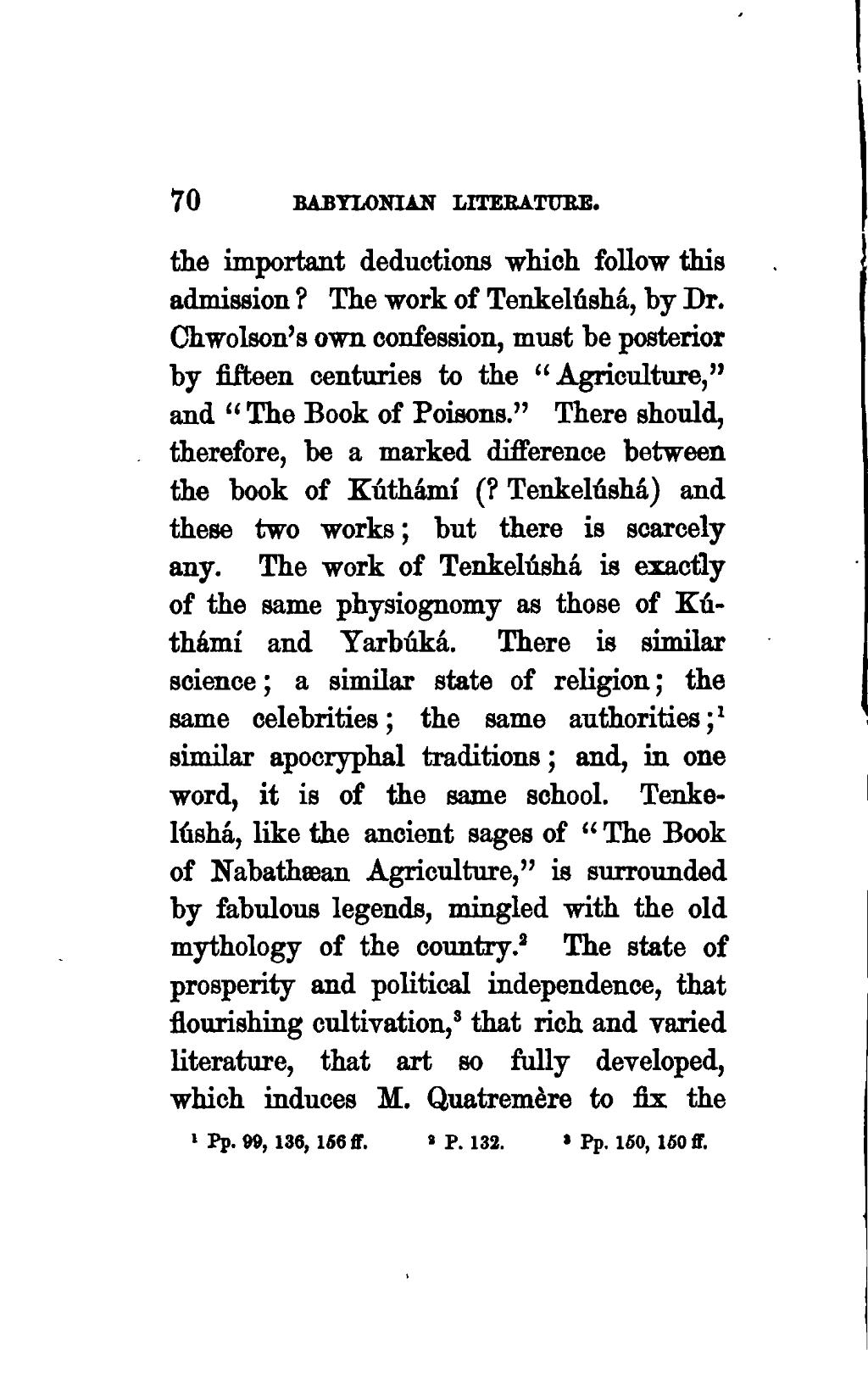the important deductions which follow this admission? The work of Tenkelúshá, by Dr. Chwolson’s own confession, must be posterior by fifteen centuries to the “Agriculture,” and “The Book of Poisons.” There should, therefore, be a marked difference between the book of Kúthámí (? Tenkelúshá) and these two works; but there is scarcely any. The work of Tenkelúshá is exactly of the same physiognomy as those of Kúthámí and Yarbúká. There is similar science; a similar state of religion; the same celebrities; the same authorities;[1] similar apocryphal traditions; and, in one word, it is of the same school. Tenkelúshá, like the ancient sages of “The Book of Nabathæan Agriculture,” is surrounded by fabulous legends, mingled with the old mythology of the country.[2] The state of prosperity and political independence, that flourishing cultivation,[3] that rich and varied literature, that art so fully developed, which induces M. Quatremère to fix the
Page:An Essay on the Age and Antiquity of the Book of Nabathaean Agriculture.djvu/86
This page has been validated.
70
BABYLONIAN LITERATURE.
